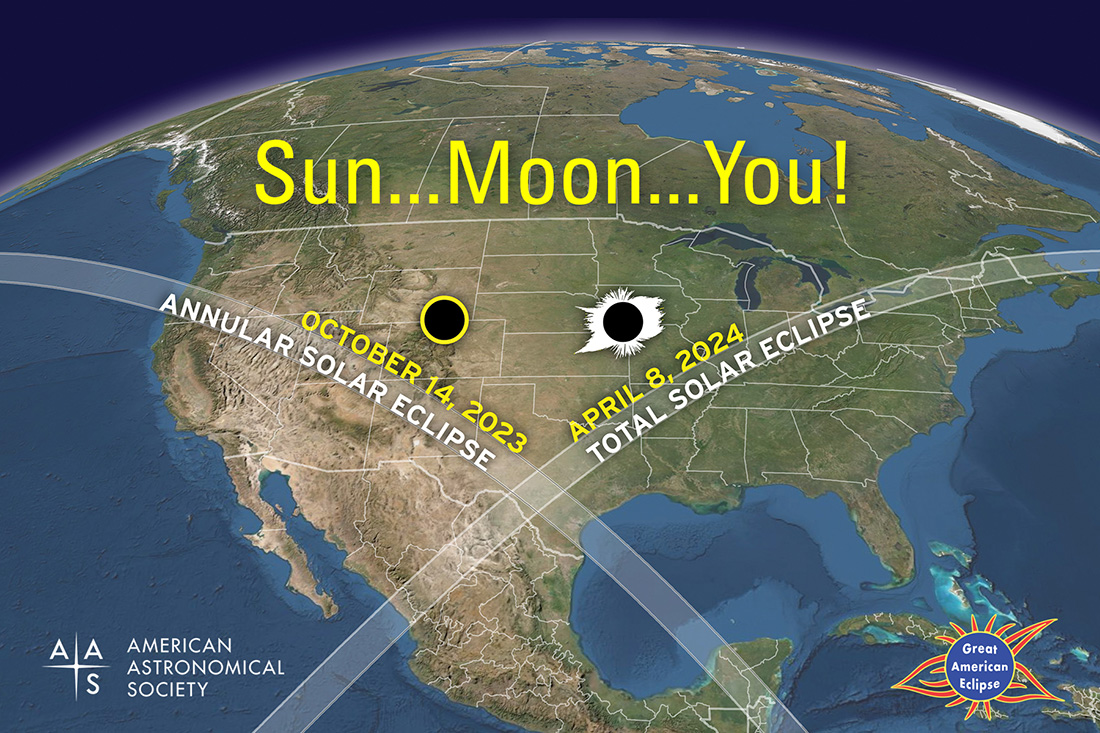
Back-to-Back American Solar Eclipses!
Do you remember the total solar eclipse that crossed the continental United States from coast to coast on August 21, 2017? If you lived in, or traveled into, the 70-mile-wide path of totality, where the Moon completely blocked the Sun's bright face and turned day into night for a few minutes, you undoubtedly remember it well. If you were outside that path under clear skies somewhere else in North America (or northern South America), perhaps you saw a partial solar eclipse that day.
The 2017 total solar eclipse was the first to touch the "Lower 48" since 1979 and the first to span the U.S. from coast to coast since 1918. Remarkably, another total solar eclipse is coming to North America on April 8, 2024, just seven years after the last one. This time the Moon's dark central shadow, about 115 miles wide, will cross Mexico, sweep northeast from Texas to Maine, and then darken eastern Canada. A partial solar eclipse will again be visible to nearly everyone in North America fortunate to have cloud-free skies.
Even more remarkably, we'll have a different type of solar eclipse in North America just six months earlier. On October 14, 2023, the Moon will again pass directly between Earth and the Sun — but this time it will not quite completely cover the solar disk, instead turning it into a thin "ring of fire." This annular (Latin for ring-shaped) eclipse will be visible within a roughly 125-mile-wide path from Oregon to Texas and on into Mexico and northern South America. And again, North Americans outside the path will be treated to a partial solar eclipse if the weather cooperates.

Safety First
The only time it is safe to view the Sun without special-purpose eye protection is during the total phase of a total eclipse, when the Moon completely blocks the Sun's bright face, the sky darkens to deep twilight blue, and the Sun's corona — its faint, wispy outer atmosphere — emerges into view. On April 8, 2024, totality will last at most 4½ minutes and will be visible only within the narrow path swept out by the Moon's dark shadow. Even within that path, though, the Sun will be partially eclipsed for more than an hour before totality and again afterward. During these partial phases, you must not look at the Sun without proper protection!
For the eclipse on October 14, 2023, at least part of the Sun's bright face will remain visible throughout the event, so it is essential at all times to view the Sun through a safe solar filter, that is, one that meets the transmission requirements of the ISO 12312-2 international standard. Such filters are widely available and cost at most a few dollars. Looking at the uneclipsed or partially (or annularly) eclipsed Sun through dark sunglasses or any other unapproved filter is a recipe for serious and potentially permanent eye injury. See our Eye Safety and Resources pages for details.
The following pages contain basic information about the coming North American solar eclipses and about solar eclipses more generally, along with links to more comprehensive information on other trusted websites.

